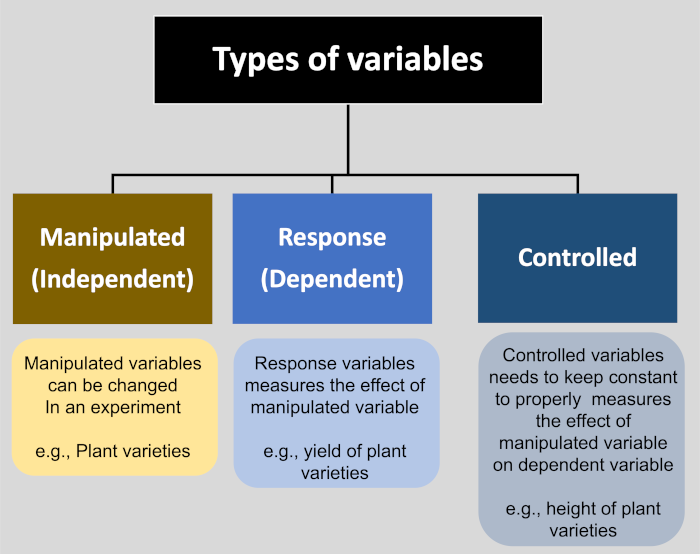Manipulated, response, and control variables [definition and research example]
Manipulated, response, and control variables
When we perform an experiment, we mainly measure three types of variables including manipulated, response, and controlled variables.
The manipulated variable is a type of variable that we can change or manipulate in an experiment. The manipulated variable is also called an independent variable.
The response variable measures the effect of the manipulated (independent) variable. The response variable changes with the change in manipulated variable. The response variable is also called a dependent variable.
The control variable is an additional variable in an experiment that is held constant throughout the experiment to properly measure the effect of a manipulated variable on the dependent variable. The control variable is not of primary interest to experiment, but they are important to understand the relationship between manipulated and dependent variables.

Examples
Here we will see two examples to better understand the manipulated, response, and control variables,
Coffee drinking and lung cancer
In this hypothetical example, the researcher wants to study the effect of coffee drinking (manipulated variable) on the development of lung cancer (dependent variable). If the person (subject) on which measurements are taken for coffee drinking is also a cigarette smoker, it may affect the outcome of lung cancer. Therefore, confounding factor smoking needs to be controlled (i.e, its effect needs to be removed or neutralized) to properly understand the relationship between coffee drinking and the development of lung cancer.
Plant varieties and yield
In this hypothetical example, the researcher wants to study the effect of different plant varieties (manipulated variable) on the yield (dependent variable) of the plants. If the height of the plant is also known to affect the yield, then it needs to be controlled. The researcher can take all plants of same height (keep height constant) from different plant varieties to properly understand its effect on yield.
References
- Pourhoseingholi MA, Baghestani AR, Vahedi M. How to control confounding effects by statistical analysis. Gastroenterology and hepatology from bed to bench. 2012;5(2):79.
This work is licensed under a Creative Commons Attribution 4.0 International License

